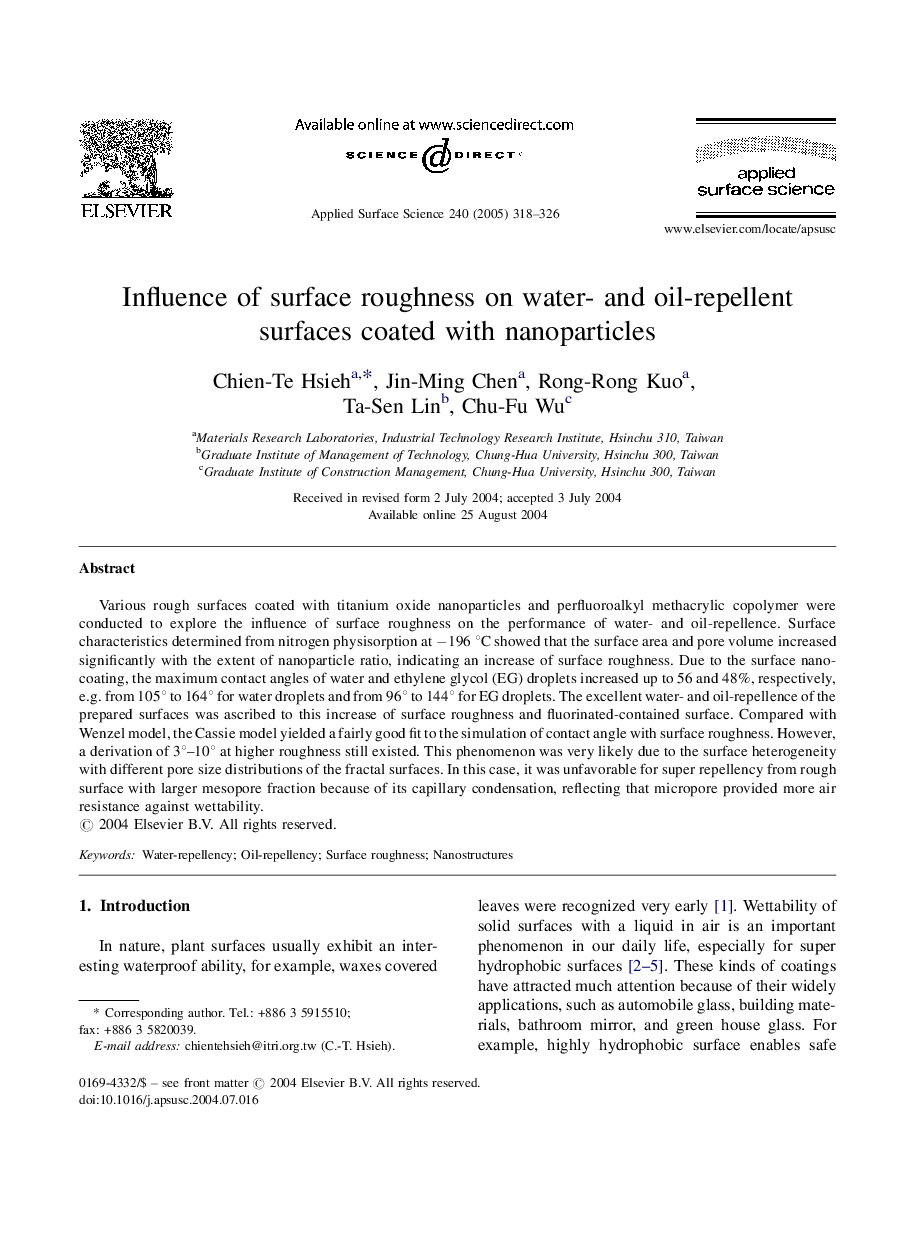| کد مقاله | کد نشریه | سال انتشار | مقاله انگلیسی | نسخه تمام متن |
|---|---|---|---|---|
| 9567652 | 1503719 | 2005 | 9 صفحه PDF | دانلود رایگان |
عنوان انگلیسی مقاله ISI
Influence of surface roughness on water- and oil-repellent surfaces coated with nanoparticles
دانلود مقاله + سفارش ترجمه
دانلود مقاله ISI انگلیسی
رایگان برای ایرانیان
موضوعات مرتبط
مهندسی و علوم پایه
شیمی
شیمی تئوریک و عملی
پیش نمایش صفحه اول مقاله

چکیده انگلیسی
Various rough surfaces coated with titanium oxide nanoparticles and perfluoroalkyl methacrylic copolymer were conducted to explore the influence of surface roughness on the performance of water- and oil-repellence. Surface characteristics determined from nitrogen physisorption at â196 °C showed that the surface area and pore volume increased significantly with the extent of nanoparticle ratio, indicating an increase of surface roughness. Due to the surface nano-coating, the maximum contact angles of water and ethylene glycol (EG) droplets increased up to 56 and 48%, respectively, e.g. from 105° to 164° for water droplets and from 96° to 144° for EG droplets. The excellent water- and oil-repellence of the prepared surfaces was ascribed to this increase of surface roughness and fluorinated-contained surface. Compared with Wenzel model, the Cassie model yielded a fairly good fit to the simulation of contact angle with surface roughness. However, a derivation of 3°-10° at higher roughness still existed. This phenomenon was very likely due to the surface heterogeneity with different pore size distributions of the fractal surfaces. In this case, it was unfavorable for super repellency from rough surface with larger mesopore fraction because of its capillary condensation, reflecting that micropore provided more air resistance against wettability.
ناشر
Database: Elsevier - ScienceDirect (ساینس دایرکت)
Journal: Applied Surface Science - Volume 240, Issues 1â4, 15 February 2005, Pages 318-326
Journal: Applied Surface Science - Volume 240, Issues 1â4, 15 February 2005, Pages 318-326
نویسندگان
Chien-Te Hsieh, Jin-Ming Chen, Rong-Rong Kuo, Ta-Sen Lin, Chu-Fu Wu,